This is a continuation of a series of posts on the Nikon D850. You should be able to find all the posts about that camera in the Category List on the right sidebar, below the Articles widget. There’s a drop-down menu there that you can use to get to all the posts in this series; just look for “D850”.
I’ve had two people tell me that the right AF Adjustment values for the D850 vary with the color temperature of the lighting. The purpose of this post is to find out if that’s true. But first, I’m going to walk you through how the D850 autofocus works with a new (to this series) lens: the Nikon 200 mm f/2G VR I.
First, let’s look at focus shift with aperture when the lens is focused manually at a constant distance, which happens to be 5.3 meters:
I’ve plotted the three Adobe RGB color channels. The graph presents displacement of the image projected on the sensor from the desired green-channel focal plane. Negative numbers indicate front-focusing. The image-plane shift is in micrometers (um). The separation of the focal distances of the three color planes is because of the longitudinal chromatic aberration (LoCA) of the lens. The dots indicate the results for each of the ten exposures at each f-stop. I’ve plotted lines indicating the average (aka mean or mu) of the sample set bolder and added thin lines above and below the means that are one standard deviation (sigma) away from them.
This lens has very low LoCA and pretty low focus shift.
Let’s look at the circles of confusion (CoCs) implied by the above graphs:
All the errors are within one pixel pitch, and in many cases well within that.
Now we’ll look at the errors with autofocus set to spot mode, using AF-S and the Westcott 1×2 foot panel that was the illuminant set to 6000 degrees Kelvin:
Those are really impressive. Plus one sigma to minus one sigma is within two pixel pitches. Looks like +2 on the AF adjustment setting would make it even better.
Now with the lights set to 3000 degrees Kelvin:
Lowering the color temperature of the lights dramatically makes the lens focus the image on the sensor about 4 micrometers in the front-focusing direction. This is a very small change; about one AF adjustment setting.
Cranking in that +2 AF adjustment with the 6000K illuminant:
Nothing to complain about here.
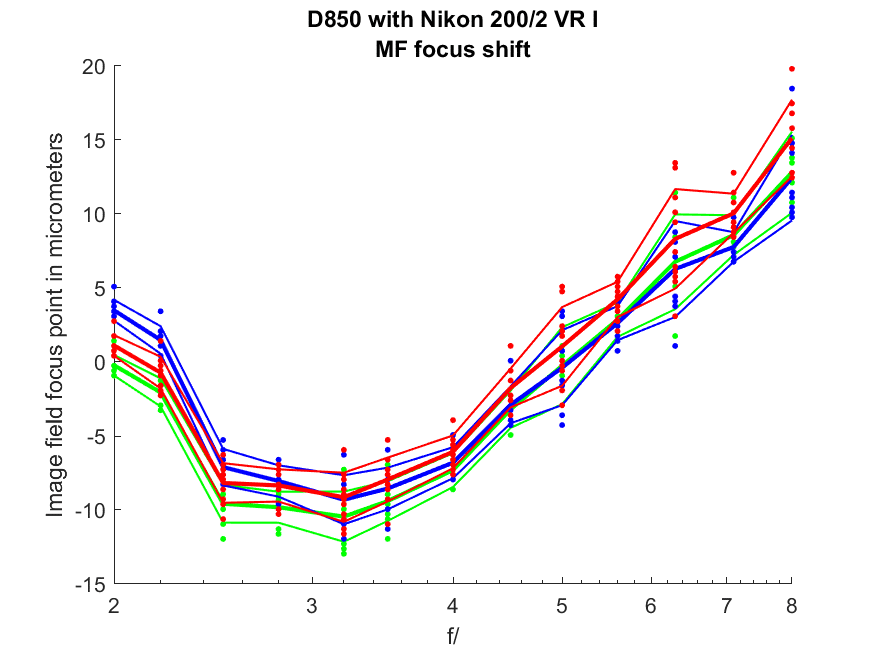
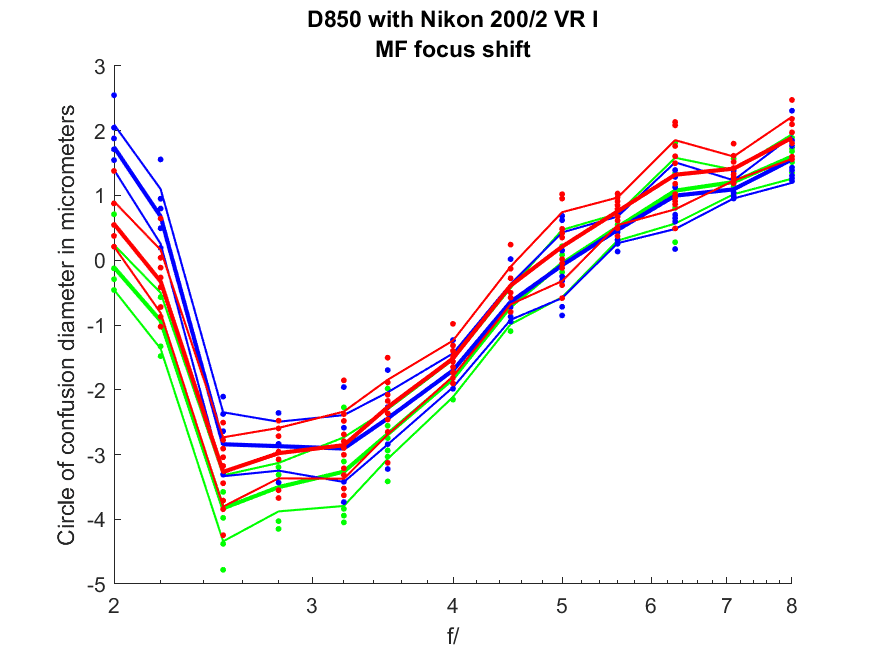
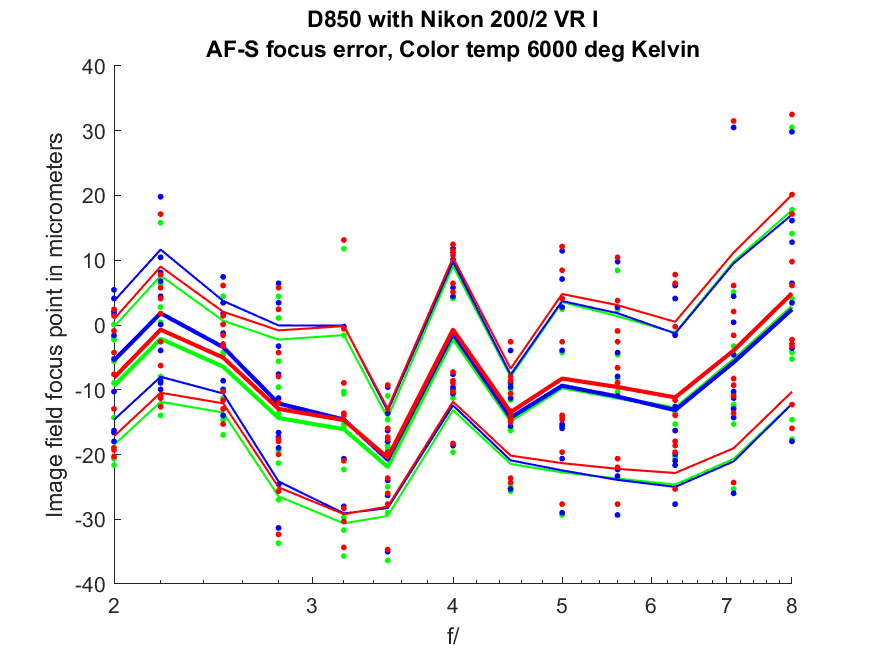
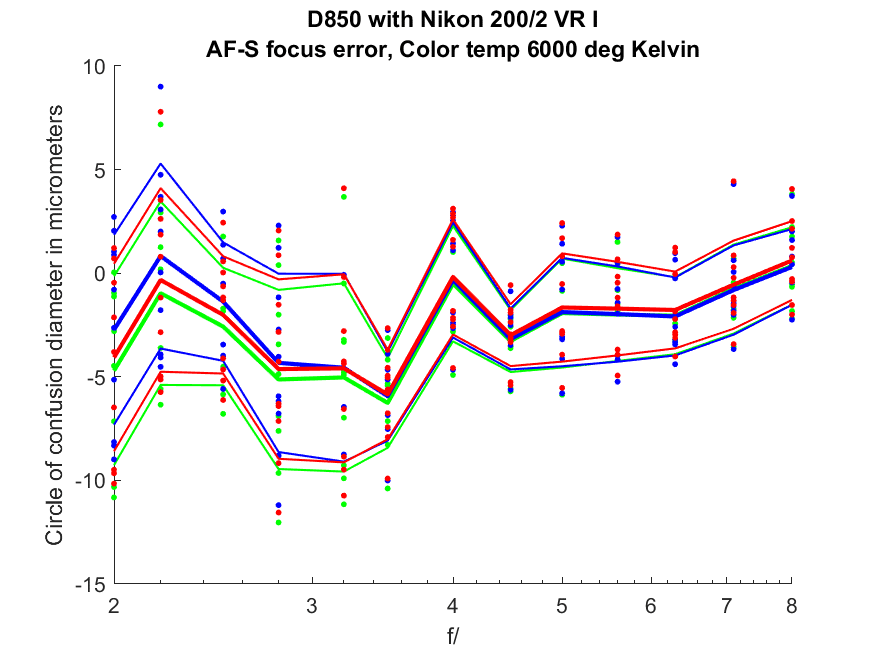
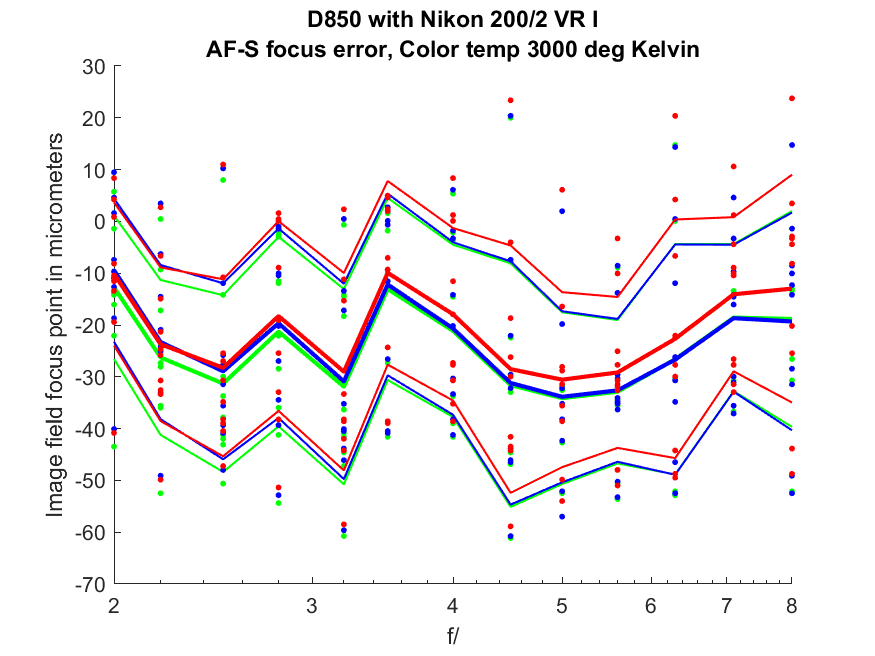
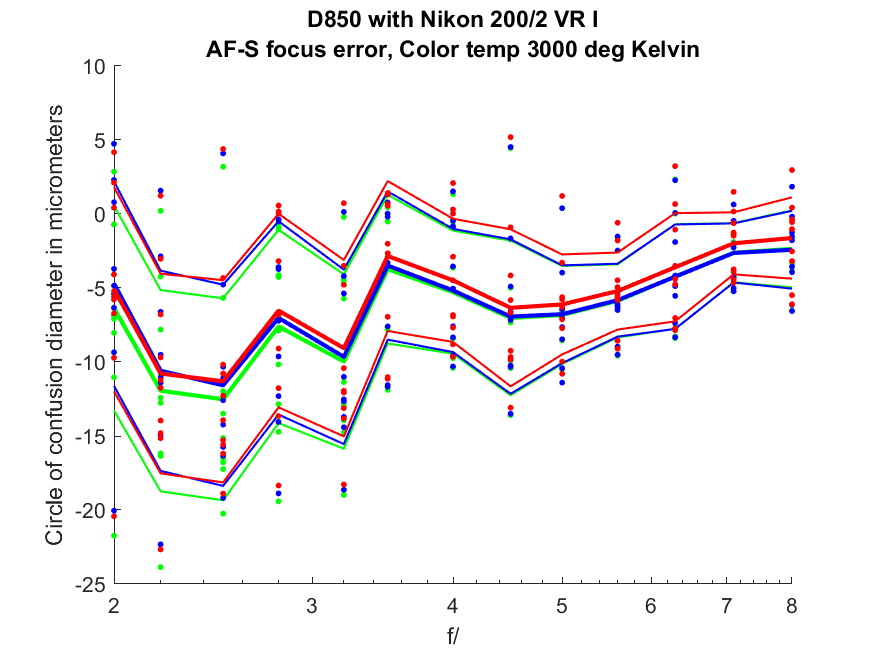
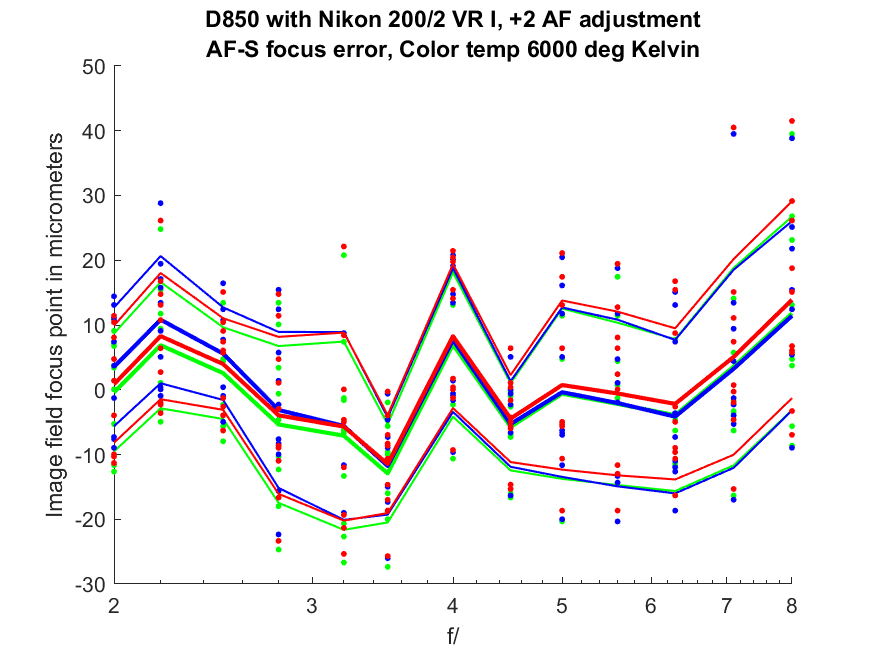
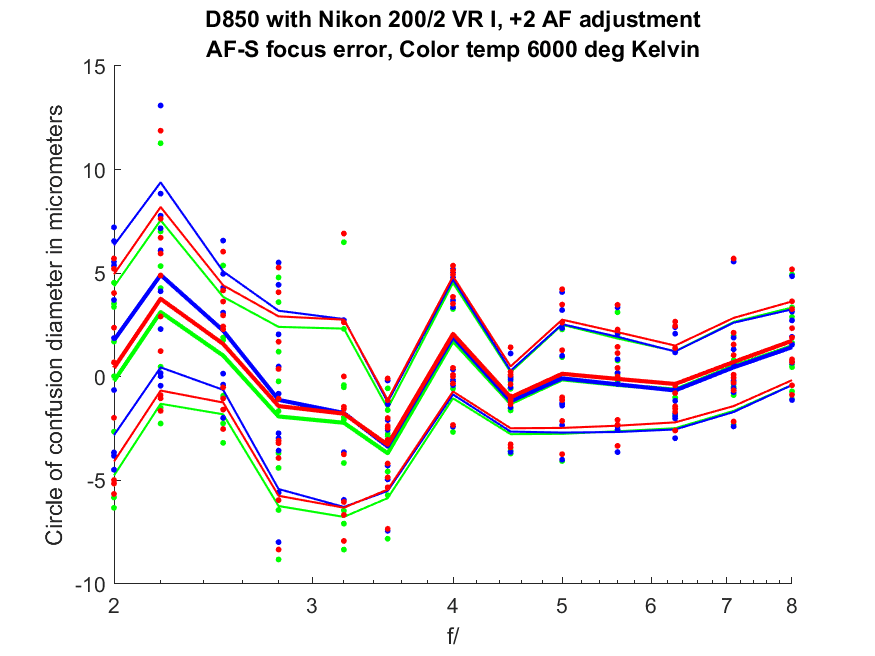
Brandon Dube says
An LED panel will not behave nicely for this, most have a giant spike at the extreme of blue (~410nm), a void between 400 and 500nm, and then a gentle bump before dying again maybe above 700nm or so. This is in stark contast to, say, warm incandescent lights in a home vs daylight which all have broad, smooth spectra.
The color difference in focusing and focus shift will be due to axial color (focusing) and spherochromatism (shift) which will arise because the AF module is monochrome and color-unaware.
Unless the MFGs are clever and combine it with zone metering to guess the color of something. Then all bets are off.
JimK says
Brandon, I hope you’re not saying that PDAF systems are exempt from metameric matches. Maybe my model is too simple, but I think the PDAF system has a spectral sensitivity function that is roughly photopic. Were it otherwise, lenses with LoCA would be focused improperly. I would hope that said sensitivity spectrum is fairly smooth. If that’s true, there are many subject spectra than could produce the same response from the PDAF system.
Note that I am not saying that the color temperature of the illuminant won’t affect PDAF focusing. It will, because the WB of the PDAF sensor is not changing as the light does, but white-balanced Y (the Y in XYZ) does change.
N/A says
> An LED panel will not behave nicely for this, most have a giant spike at the extreme of blue (~410nm), a void between 400 and 500nm, and then a gentle bump before dying again maybe above 700nm or so.
it depends… may be his panel is using = https://cdn.shopify.com/s/files/1/0344/6401/files/D50_SPD.jpg
like P1 assembles they Photon LED panel from Yuji components ( solder this = https://store.yujiintl.com/products/vtc-series-d50-5000k-high-cri-mcpcb-led-module-unit-5-pcs )
N/A says
when I was still using a primitive dSLRs (Pentax) – there was a noticeable focusing difference between tungsten illumination vs daylight / blue or overcast sky through window / illumination for off sensor PDAF using lenses like FA50/1.4 (the only change in setup was to close window curtains and switch tungsten bulb on – camera on tripod, target, focus point, focusing distance everything else stayed the same)… that was repeatable.
JimK says
So you were going from 7500K to about 2800K, right? I saw a small but noticeable change going from 6000K to 3000K, so that’s not surprising. It makes sense if your lens has any LoCA, because the WB of the PDAF sensor is not changing as the light does, but white-balanced Y (the Y in XYZ) does change.
N/A says
> So you were going from 7500K to about 2800K, right?
yes from sky through window to even less than 2800K from 60wt regular home bulb back to sky through window, etc… do note – that was old (think K10D, Kx times) Pentax dSLR, primitive off sensor AF vs modern Nikon and screw driven FA-series prime… but difference in focusing between tungsten and daylight was repeatable and constant… FA50/1.4 lens of course had a lot of uncorrected aberrations…